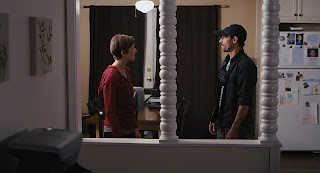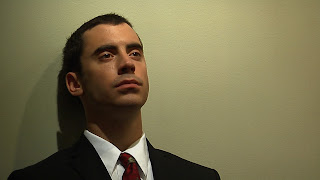DVD Review - Let the Fire Burn
 |
| Michael Moses Ward, one of two survivors of the 1985 Osage Avenue fire in Philadelphia |
The fire was actually started by the Philadelphia Police Department and the fire got to be so large because the Philadelphia Fire Department was basically told not to do anything. In fact, the title of this documentary, which tells the events leading up to and through this fire, comes from a quote by then Philadelphia Mayor Wilson Goode, the city's first black mayor, elected in 1983. Mayor Goode said, "Let the fire burn!" And, burn it did. As a result, the fire ended up killing eleven people, including five children, and ultimately none of the officials involved were punished.
At the time, the Philadelphia news media did an excellent job of covering this event. Director Jason Osder has done the task of gathering that news coverage and assembling it into a non-narrated narrative that walks us through the events that concluded in the conflagration. This movie is comprised of nothing but footage from 6ABC, CBS3, NBC10, WHYY and Temple University, as well as information from The Philadelphia Inquirer and the Philadelphia Daily News. A lot of it is footage during the fire, but there's also a lot that comes from the run up. 6ABC even did a documentary in 1976 about the subject at the center of the fire.
The subject is that of the organization known as "MOVE." The organization was founded by a man calling himself John Africa. The organization seems like it consisted mainly of John Africa's family but then started recruiting various members it could find. Some of them were former Black Panther members. As such, MOVE was perhaps looked at as a similar militant group. Members who were interviewed in the late 70s and early 80s continually spoke of their rejection of government institutions, rejection of technology and rejection of processed foods in favor of eating more raw foods and the utilization of more raw materials from the Earth.
All of this seems innocuous until MOVE started disrupting or being an annoyance to their neighbors. MOVE was originally established in the Philadelphia neighborhood called Powelton Village, just north of the city's Ivy League school UPenn and Drexel University. One disruption came in the form of MOVE breaking the sidewalk concrete. More incidents occurred, escalating to confrontations with police that turned deadly.
MOVE was eventually forced out of Powelton Village and re-organized in what was 6221 Osage Avenue in the Cobbs Creek neighborhood of Philadelphia. Once there, the organization continued to cause disruptions and annoyances to their neighbors. Some city officials had already labeled MOVE a terrorist group. Tension reached a boiling point forcing a standoff at that house on Osage Avenue.
The neighbors were evacuated leaving the MOVE members barricaded in the Osage Avenue house. The police and fire department surrounded it and proceeded to take aggressive measures to get those MOVE members out. It's those measures that were the most outrageous and over-the-top and that ultimately led to the fire.
Thanks to the news media, almost every minute was captured on live television with the news reporters having to comment in the moment, speak off-the-cuff and often be flustered or in shock as to what was happening. Osder's inter-cuts the Special Investigation Commission, which was broadcast on the Philadelphia PBS station after the incident and featured testimonials of the people involved. Former MOVE members and police officers are all questioned.
Osder's selection hits the central issue of how do we treat radical and rebellious groups that claim religious freedoms. I don't wish to compare MOVE to polygamists to Scientologists or the Westboro Baptists, or even to cults, but those thoughts do cross the mind when trying to contextualize and understand MOVE. I suppose the closest comparison would be to the Black Panthers, but it wasn't necessarily only white people who had a problem with MOVE. Fellow black people did too.
The broader question, however, goes to police and government misconduct. No matter the opinion of MOVE, the five children who died that day in the fire did not have to die and shouldn't have. It was the police's aggressive actions and the fire department's negligence or lack of actions that are to blame. Yet, they weren't blamed. They all got away with killing 11 people needlessly.
Because of Academy rules, Osder's movie was not eligible for an Oscar. Osder compiled all stock footage and shot no new footage for this documentary. Osder did win the Jury Award for Best Local Feature at the 2013 Philadelphia Film Festival. This movie won two awards at the Tribeca Film Festival. It also won an IDA Award, as well as a Spirit Award. It is a knockout piece.
Five Stars out of Five.
Not Rated but recommended for mature audiences.
Running Time: 1 hr. and 35 mins.










Comments
Post a Comment